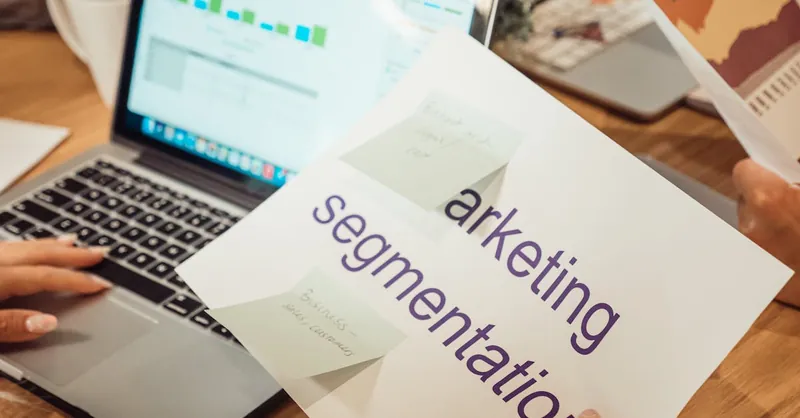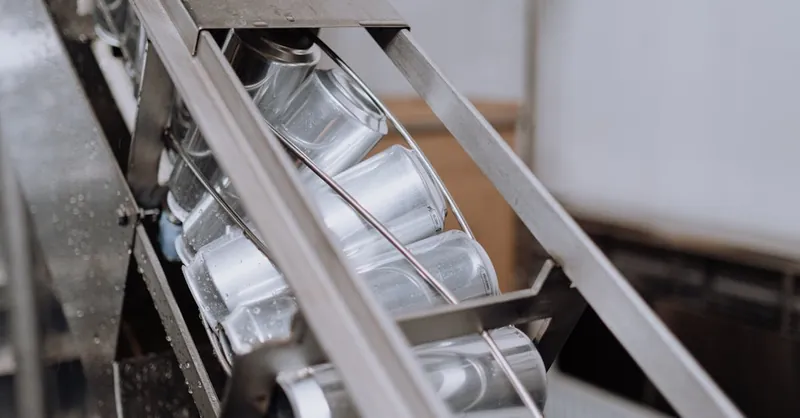Build SaaS for Passive Income: A Developer’s Guide
Category: Programming
Unlocking Passive Income with SaaS: A Practical Guide for Developers
If you're a tech-savvy programmer or developer, you’ve likely explored various ways to monetize your coding skills. Building a Software as a Service (SaaS) product stands out as one of the most lucrative and scalable methods to create a steady passive income stream. You’ve probably searched for strategies and best practices on how to build SaaS for passive income that doesn’t demand constant hands-on management but still grows and earns effectively. This guide addresses the key pain points—deciding what to build, handling infrastructure, finding paying users, and automating operations. It’s tailored specifically for developers who understand the technical landscape but want to transition from active development to generating automated revenue. Unlike generic advice, this post dives deep into actionable sections covering ideation, development, deployment, marketing, and scaling with minimal ongoing effort. By reading further, you’ll discover a clear roadmap and practical insights to build your own SaaS product that can steadily generate passive income, allowing you to focus on coding creativity and freedom rather than constant client work or one-off projects.
- Unlocking Passive Income with SaaS: A Practical Guide for Developers
- Understanding SaaS and Passive Income
- Validating Your SaaS Idea: Finding High-Demand Niches for Maximum Impact
- Planning and Designing Your SaaS Product
- Choosing the Right Tech Stack and Architecture for Your SaaS
- Developing and Deploying Your SaaS Product
- Pricing Models and Monetization Strategies for SaaS Passive Income
- Subscription Pricing: The Backbone of Recurring Revenue
- Freemium Model: Driving User Acquisition and Upsell Potential
- Tiered Pricing Plans: Catering to Diverse Customer Needs
- Free Trials: Lowering Purchase Anxiety and Boosting Conversions
- Upselling and Cross-Selling: Maximizing Customer Lifetime Value
- Marketing Your SaaS with Limited Time Investment
- Automation and Maintenance: Keeping Your SaaS Running Smoothly with Minimal Effort
- Scaling Your SaaS Business: When and How to Grow While Maintaining Passive Income
- Common Pitfalls and How to Avoid Them
Understanding SaaS and Passive Income
Before diving into building your own SaaS product, it's essential to clearly understand what Software as a Service (SaaS) entails and why it pairs so effectively with the concept of passive income. SaaS refers to software applications that are hosted online and delivered to users via a subscription model. Instead of a one-time purchase, customers pay recurring fees—monthly or annually—to access and use the software. This subscription-based revenue model creates a predictable, ongoing cash flow stream that is much more stable than traditional product sales.
Passive income, on the other hand, is income that requires minimal active effort to maintain once the initial work is done. Unlike freelance projects or consulting gigs, which demand continuous time and energy, passive income streams allow you to earn money even while you focus on other priorities. The beauty of SaaS as a vehicle for passive income lies in its scalability and automation potential: after the initial development, marketing, and customer acquisition phases, most SaaS platforms can run with minimal hands-on management thanks to cloud infrastructure, automated billing, and customer support tools.
Why SaaS is Ideal for Recurring Passive Revenue
- Predictability and Stability: The subscription model guarantees recurring monthly or yearly payments, reducing revenue volatility.
- Lower Ongoing Effort: Once your SaaS product is built and deployed, many operational tasks can be automated, such as user onboarding, billing, and updates.
- Scalability: Unlike services tied to your time, SaaS can serve thousands of customers simultaneously without proportionally increasing your workload.
- Continuous Improvement Opportunities: You can regularly improve your product to reduce churn and increase lifetime customer value, which further solidifies your passive income stream.
This blend of predictable recurring revenue with low maintenance effort makes SaaS an unmatched strategy for developers seeking to transition from active coding jobs to building long-term, reliable passive income sources. By mastering SaaS fundamentals, you position yourself to unlock a sustainable and scalable digital business that works for you around the clock.

Image courtesy of Markus Winkler
Validating Your SaaS Idea: Finding High-Demand Niches for Maximum Impact
Before investing time and resources into building your SaaS product, validating your idea is critical to ensure there is strong demand and a willing customer base. Targeting the right niche with real pain points can dramatically increase your chances of success and passive income sustainability. Start by identifying industry pain points and gaps where existing solutions fall short or are overly complex. Look for repetitive problems faced by businesses or professionals that can be solved with automation, enhanced workflows, or simplified software.
Key Methods to Validate Your SaaS Idea
-
Industry Pain Point Research:
Analyze forums (e.g., Reddit, Stack Overflow), social media groups, and niche communities where your target audience congregates. Pay close attention to common frustrations, feature requests, and workarounds people adopt. This qualitative research helps uncover unmet needs and validates the desirability of your solution. -
Competitor Analysis:
Investigate existing SaaS products serving your niche. Identify their strengths, pricing models, customer reviews, and gaps in features or usability. Understanding your competitors’ weaknesses can reveal opportunities for differentiation and highlight whether the market is saturated or ripe for innovation. -
Market Research and Demand Validation:
Use keyword research tools to analyze search volume and trends related to your problem area and solution keywords. Validate demand quantitatively by running surveys, polls, or landing page tests offering a preview of your SaaS concept. Initial sign-ups or expressions of interest provide concrete signals that your idea resonates with potential customers. -
Pilot MVP and Feedback Loops:
Consider building a minimal viable product (MVP) targeting the core pain point, then gather user feedback to iterate quickly. Early adopters give valuable insights into feature priorities, pricing sensitivity, and usability, reducing the risk of building unnecessary functionality.
By applying these validation techniques, you ensure that your SaaS idea is not just technically feasible but commercially viable. Finding the sweet spot between a pressing problem and a manageable market size sets the foundation for developing a scalable product that generates reliable passive income over time. Remember, successful SaaS ventures start with deep understanding of your niche’s unmet needs coupled with data-driven validation before writing a single line of code.

Image courtesy of ThisIsEngineering
Planning and Designing Your SaaS Product
Once your SaaS idea is validated, the next critical step is planning and designing your product thoughtfully to maximize its potential for passive income. Defining your product’s core features clearly and focusing on a Minimum Viable Product (MVP) ensures you build only what’s essential to solve your customers’ main problems, speeding up time-to-market and minimizing wasted effort.
Defining Core Features and Prioritizing the MVP
Start by listing all the features that would make your SaaS solution effective, but then relentlessly prioritize them based on:
- Customer impact: Focus on features that directly address the primary pain point to deliver real value quickly.
- Development complexity: Choose low-complexity features first to accelerate MVP delivery.
- Revenue potential: Include capabilities that facilitate monetization, such as subscription management or usage tracking.
- User retention: Incorporate functionalities that increase stickiness, like personalization or notifications.
By launching with a lean MVP, you can validate assumptions faster, integrate user feedback, and avoid overbuilding, which is key to preserving a lean workload later as your SaaS grows.
UI/UX Design Best Practices for SaaS Success
User experience (UX) is a cornerstone of SaaS success. A cluttered or unintuitive interface drives potential subscribers away, while a clean, user-friendly UI encourages adoption and reduces churn. Keep these principles in mind:
- Simplicity and clarity: Design interfaces that require minimal clicks to complete tasks.
- Consistency: Use uniform layouts, typography, and color schemes throughout your application.
- Responsive design: Ensure seamless usability across desktops, tablets, and smartphones.
- Clear onboarding: Provide guided walkthroughs or tooltips to help new users get started effortlessly.
- Accessibility: Follow accessibility standards so your SaaS is usable by people with disabilities, expanding your market reach.
Investing time upfront in excellent UI/UX pays dividends through increased customer satisfaction, longer retention, and reduced support overhead—crucial factors in automating your SaaS for passive income.
Considering Scalability and Automation from the Start
Planning for scalability and automation during design is essential to keep your SaaS running smoothly as your user base expands without tying up your time. Key considerations include:
- Modular architecture: Build your SaaS with loosely coupled components that can scale independently.
- Cloud infrastructure: Leverage cloud platforms like AWS, Azure, or Google Cloud for elastic compute and storage resources.
- Automated billing: Integrate payment gateways and subscription management systems that run without manual intervention.
- Self-service customer portals: Allow users to manage their accounts, upgrade plans, and resolve common issues autonomously.
- Monitoring and alerting: Implement monitoring tools to track performance and receive proactive alerts to prevent downtime.
By embedding scalability and automation from day one, you create a SaaS product that not only meets early customer needs but also grows effortlessly, enabling you to earn passive income with minimal ongoing operational burden.

Image courtesy of Christina Morillo
Choosing the Right Tech Stack and Architecture for Your SaaS
Selecting the ideal tech stack and software architecture is a crucial step that can significantly impact your SaaS product’s development speed, scalability, maintainability, and ultimately your passive income potential. Striking the right balance between rapid initial development and sustainable long-term growth will save you from costly rewrites or technical debt down the road.
Evaluating Programming Languages and Frameworks
When deciding on programming languages and frameworks, consider:
- Development Speed: Popular, well-documented frameworks with large communities (e.g., JavaScript/TypeScript with React/Node.js, Python with Django or Flask, or Ruby on Rails) enable faster MVP delivery and access to plenty of libraries and tooling.
- Performance and Scalability: Choose languages known for reliable performance under load, such as Go, Java, or C#, particularly if your SaaS will handle high concurrency or resource-intensive processing.
- Ecosystem and Integrations: Pick tools with good support for third-party APIs, payment gateways, and cloud services to speed up building essential SaaS features like billing and user management.
- Developer Familiarity: Leveraging your own or your team’s expertise minimizes the learning curve and accelerates iterative improvements.
A balanced approach often involves mixing frontend frameworks optimized for great user experience with backend technologies that ensure reliability and scalability.
Cloud Providers and Infrastructure Considerations
Choosing the right cloud provider is fundamental for cost-effective scalability and automation:
- AWS offers extensive services and global infrastructure ideal for complex SaaS solutions.
- Google Cloud Platform (GCP) is strong on AI/ML integrations and seamless Kubernetes support.
- Microsoft Azure integrates well with enterprise software stacks and has comprehensive PaaS options.
Look for providers that simplify auto-scaling, managed databases, serverless computing, and provide robust monitoring, all pivotal to minimizing manual maintenance and enabling passive income flow.
Microservices vs Monolithic Architecture
Deciding between a microservices architecture and a monolith hinges on your product’s complexity and growth plans:
- Monolithic architectures are faster and cheaper to build initially, ideal for MVPs and small teams focused on quick deployment and iteration.
- Microservices architectures offer superior scalability and fault isolation by splitting functionality into independent services, but require more upfront design, DevOps expertise, and potentially increase operational overhead.
For most solo developers or small teams targeting passive income, starting with a modular monolith — where components are loosely coupled but deployed as a single app — can provide the best balance. As your user base grows, you can gradually refactor into microservices to support scaling and increased feature complexity.
By carefully selecting a tech stack optimized for rapid development and an architecture that considers both immediate delivery and future scalability, you lay down a strong foundation for a SaaS product that demands minimal ongoing maintenance. This foundation is essential to maximizing your passive income stream by reducing time spent on tech debt and operational firefighting.

Image courtesy of Markus Spiske
Developing and Deploying Your SaaS Product
Once your SaaS product is planned and designed, the focus shifts to agile development, continuous integration/continuous deployment (CI/CD), and leveraging automation to ensure fast iteration and reliable releases with minimal manual overhead. Applying agile development principles—such as short development sprints, frequent testing, and iterative feedback loops—enables you to quickly respond to user needs and continuously improve your product, which is crucial for minimizing active management and optimizing for passive income.
Embracing Agile Development Principles
- Iterative Progress: Break down your SaaS development into manageable sprints, delivering incremental features that can be tested, validated, and released quickly.
- User-Centric Feedback: Regularly incorporate user feedback from beta testers or early customers to align development with real-world needs and reduce costly rework.
- Cross-Functional Collaboration: Whether you work solo or with a team, maintain clear communication channels and adaptable workflows using tools like Jira, Trello, or GitHub Projects to track tasks and progress efficiently.
Agility not only accelerates your time-to-market but also reduces ongoing active involvement by fostering predictable, sustainable development cycles.
Continuous Integration and Continuous Deployment (CI/CD)
Implementing CI/CD pipelines is fundamental in automating the testing and deployment phases, allowing your SaaS to evolve confidently without risking downtime or introducing bugs to paying users. CI/CD automates:
- Code integration: Automatically merging new code changes daily to detect conflicts early.
- Automated testing: Running unit, integration, and UI tests with each code commit to ensure functionality remains intact.
- Deployment: Pushing updates seamlessly to staging and production environments without manual intervention.
Popular CI/CD tools like GitHub Actions, GitLab CI/CD, CircleCI, or Jenkins can integrate with your cloud infrastructure to provide reliable, repeatable deployments that keep your SaaS product up-to-date and secure, dramatically decreasing maintenance time.
Leveraging Automation Tools for Testing and Deployment
Automation extends beyond CI/CD into comprehensive monitoring and error detection:
- Automated testing suites simulate user interactions to catch bugs early.
- Infrastructure as Code (IaC) tools like Terraform or AWS CloudFormation automate environment setup and scaling.
- Automated alerts and rollback mechanisms ensure rapid response to any failures while minimizing downtime and your need to intervene manually.
Proactively automating testing and deployment pipelines minimizes risks, improves product quality, and empowers you to focus on strategic improvements rather than firefighting.
Securing Your SaaS Environment
Security is critical in protecting both your users’ data and your recurring revenue. Integrate security practices throughout your development and deployment process by:
- Applying strong authentication and authorization protocols (e.g., OAuth 2.0, multi-factor authentication).
- Encrypting data at rest and in transit, using SSL/TLS and database encryption.
- Regularly updating dependencies and patching vulnerabilities with automated tools like Dependabot.
- Implementing network security measures, including firewalls and DDoS protection provided by cloud providers.
- Conducting security audits and penetration testing to proactively identify weaknesses.
Building security in from day one not only safeguards your SaaS but also builds trust with customers, reducing churn and maximizing your passive income potential.
By adopting agile development, CI/CD automation, and robust security practices, you create a resilient SaaS product that continuously delivers value with minimal hands-on effort. This solid foundation translates directly into scalable passive income, allowing you to automate growth and operational stability confidently.

Image courtesy of cottonbro studio
Pricing Models and Monetization Strategies for SaaS Passive Income
Choosing the right pricing model and monetization strategy is crucial to maximizing consistent passive income from your SaaS product. The goal is to design a structure that attracts a broad range of users, encourages upgrades, and generates predictable recurring revenue with minimal churn. Let’s explore the most effective approaches tailored for SaaS success.
Subscription Pricing: The Backbone of Recurring Revenue
The subscription pricing model lies at the heart of SaaS monetization. It involves charging customers a recurring fee—usually monthly or annually—to access your software. This model ensures steady cash flow, simplifies revenue forecasting, and builds customer lifetime value over time. Popular subscription variations include:
- Monthly vs Annual Plans: Offering discounts on annual subscriptions incentivizes longer commitments, improving retention and upfront cash.
- Usage-Based Pricing: Charging customers based on their actual use of features (e.g., number of users, API calls, data storage) aligns cost with value received, appealing to different customer segments.
- Flat-Rate Pricing: A simple fixed fee per user or per account that’s easy to communicate and understand, often favored by smaller teams or startups.
Freemium Model: Driving User Acquisition and Upsell Potential
The freemium model is a powerful strategy for generating passive income by attracting a large user base with a free tier offering essential features, while encouraging paid upgrades for premium capabilities. Key benefits include:
- Lower friction: Free access removes barriers to trial and adoption.
- Viral growth: Users often share or invite others due to zero entry cost.
- Upsell funnel: Free users serve as warm leads, increasing conversion rates to paid plans.
To succeed with freemium, carefully balance your free tier's value—enough to hook users but limited enough to incentivize upgrading.
Tiered Pricing Plans: Catering to Diverse Customer Needs
Offering tiered pricing plans segmented by feature sets, usage limits, or service levels allows you to serve a wide audience—from individual users to enterprises—maximizing revenue potential. Common tier structures include:
- Basic: Affordable entry-level plan targeting price-sensitive customers with minimal features.
- Pro: Mid-tier offering enhanced features, integrations, or priority support.
- Enterprise: Customizable plans with advanced functionalities, dedicated account management, or SLAs.
Tiered plans encourage customers to self-select based on needs and budget, increasing average revenue per user (ARPU) while minimizing churn through appropriate positioning.
Free Trials: Lowering Purchase Anxiety and Boosting Conversions
A free trial period, typically 7 to 30 days, lets prospects experience your SaaS fully before committing financially. This increases trust and lowers purchase hesitation, especially for higher-priced plans. Best practices include:
- No credit card required for trial sign-up, reducing signup friction.
- Automated email sequences during trial to educate users and highlight benefits.
- Clear call-to-actions prompting upgrade at trial end.
Free trials combine the benefits of hands-on product experience with marketing automation to drive conversion rates efficiently with minimal active effort.
Upselling and Cross-Selling: Maximizing Customer Lifetime Value
Effective upselling techniques are essential to increase revenue from your existing user base without acquiring new customers. Strategies include:
- Feature Unlocks: Encourage upgrades by gating premium or time-saving features.
- Add-ons and Integrations: Offer optional modules or APIs that enhance core functionality.
- User Seat Expansion: Allow customers to add more users to their plan as their teams grow.
- Priority Support or Training: Premium support levels can be an attractive upsell for enterprise clients.
Automating personalized upsell prompts via in-app messages, email, or billing notifications capitalizes on warming leads and minimizes manual sales effort, boosting passive income sustainably.
By strategically combining subscription pricing, freemium tiers, free trials, and automated upselling, your SaaS product can generate a robust and reliable passive income stream. These tailored monetization strategies ensure predictable recurring revenue while scaling user acquisition and customer value, allowing you to maximize profits with minimal ongoing management. Prioritizing customer-centric pricing models not only increases acquisition but also minimizes churn, securing your SaaS business as a dependable source of passive income.

Image courtesy of Markus Winkler
Marketing Your SaaS with Limited Time Investment
Attracting paying users is critical to turning your SaaS product into a sustainable passive income stream, yet marketing can easily become a time-consuming endeavor if not approached strategically. To maximize impact while minimizing active effort, focus on leveraging cost-effective, automated, and developer-friendly marketing tactics that scale without demanding constant oversight.
SEO: Building Sustainable Organic Traffic
Search Engine Optimization (SEO) remains one of the most powerful long-term marketing strategies for SaaS products, driving free, targeted traffic from users actively searching for solutions you offer. Start by:
- Keyword Research: Identify high-intent keywords relevant to your SaaS niche using tools like Ahrefs, SEMrush, or Google Keyword Planner. Target long-tail keywords that reflect user pain points or feature queries, which often have lower competition and higher conversion rates.
- On-Page SEO: Optimize key pages—landing pages, blog posts, documentation—with clear headlines, meta descriptions, and keyword-rich, user-friendly content.
- Technical SEO: Ensure fast load times, mobile responsiveness, and crawl-friendly site architecture to please search engines and improve user experience.
- Backlink Building: Earn backlinks from reputable sites within your industry, such as developer blogs, SaaS directories, and tech forums, to boost your domain authority.
Investing time initially into SEO builds a solid foundation for continuous inbound traffic that requires minimal ongoing effort once established.
Content Marketing: Educate and Inspire Your Audience
Content marketing helps position your SaaS as the go-to solution through educational, engaging, and relevant materials. Focus on creating:
- How-to guides and tutorials that solve common problems faced by your target users.
- Case studies and success stories demonstrating real-world benefits and ROI.
- Regular blog posts addressing trending topics and questions within your niche.
- Video content and webinars to diversify formats and capture more engagement.
Automate content distribution through scheduling tools (e.g., Buffer, Hootsuite) and repurpose articles into newsletters, social posts, and guest contributions. This consistent presence attracts organic leads and nurtures prospects without demanding constant manual input.
Pay-Per-Click Advertising: Targeted User Acquisition with Measurable ROI
Paid advertising campaigns on platforms like Google Ads, LinkedIn, or Facebook can accelerate user acquisition with precise targeting. To optimize limited marketing time:
- Start with small-budget, highly focused campaigns targeting well-researched keywords or demographics.
- Use conversion tracking and analytics to monitor performance and pause underperforming ads.
- Employ retargeting ads to re-engage visitors who didn’t convert initially, increasing efficiency.
- Leverage automation features like bid strategies and dynamic creatives to reduce manual management.
PPC offers immediate visibility and helps validate messaging, which complements longer-term organic efforts.
Leveraging Developer Communities and Partnerships
Developer-centric SaaS products benefit greatly from active participation in popular programming communities such as GitHub, Stack Overflow, Reddit, and specialized Slack or Discord groups. Engage authentically by:
- Sharing insights, answering questions, and contributing open source code related to your SaaS.
- Hosting or sponsoring webinars, meetups, or hackathons to build trust and awareness.
- Collaborating with complementary SaaS businesses for co-marketing opportunities, such as bundled offerings or referral programs.
These relationships create a pipeline of qualified, engaged users likely to convert and remain loyal.
Automating Marketing Funnels for Effortless Lead Nurturing
Automation is the key to scaling marketing without increasing workload. Use marketing automation platforms like HubSpot, Mailchimp, or ConvertKit to build funnels that:
- Capture leads through optimized landing pages and incentivized signups (e.g., free trials, ebooks).
- Deliver personalized email sequences educating prospects and encouraging upgrades.
- Score leads automatically to identify high-potential users for targeted offers.
- Trigger in-app messages or notifications promoting relevant upsells or features.
By automating repetitive marketing tasks and communications, you keep users engaged and convert more paying customers with minimal manual effort.
Implementing these SEO tactics, content marketing strategies, targeted PPC campaigns, community engagement, and automated funnels will help you attract and retain paying users while preserving your valuable development time. This balanced marketing approach not only drives steady user growth but also accelerates the maturity of your SaaS passive income stream with limited ongoing involvement.

Image courtesy of Kindel Media
Automation and Maintenance: Keeping Your SaaS Running Smoothly with Minimal Effort
To achieve true passive income from your SaaS product, automating key operational processes and streamlining maintenance are essential. Without proper automation, manual tasks such as customer onboarding, subscription billing, support, monitoring, and software updates can quickly consume your time, eroding the “passive” nature of your revenue stream.
Automating Customer Onboarding
A seamless onboarding experience is critical to convert trial users into paying customers and reduce churn. Automate onboarding by:
- Creating self-service signup flows that guide users step-by-step without needing human intervention.
- Implementing in-app tutorials, tooltips, and welcome emails that educate users on core features and value propositions.
- Using triggered email sequences or chatbots to answer common questions and encourage adoption.
Automation here not only enhances user experience but decreases dependency on manual support, enabling you to scale effortlessly.
Streamlining Billing and Subscription Management
Integrate reliable automated billing systems that handle:
- Recurring subscription payments with support for multiple plans and currencies.
- Grace periods, failed payment retries, and dunning management to minimize involuntary churn.
- Automated invoicing and tax calculation compliant with regional laws (e.g., VAT, sales tax).
Popular payment processors like Stripe, Chargebee, or Recurly offer APIs and dashboard tools to fully automate revenue collection and customer account management—eliminating manual billing headaches.
Providing Efficient Customer Support with Chatbots and Ticketing Systems
While personalized support is important, it can become overwhelming without automation. Boost customer service efficiency by:
- Deploying AI-powered chatbots to instantly respond to frequently asked questions 24/7, escalate complex issues only when necessary.
- Implementing ticketing systems like Zendesk or Freshdesk to categorize, prioritize, and track support requests automatically.
- Using help centers or knowledge bases integrated within your SaaS UI for self-service problem resolution.
This hybrid support model drastically reduces live support demands while maintaining user satisfaction, essential for sustaining passive income growth.
Monitoring Performance and Automating Updates
Maintaining a high-availability SaaS requires ongoing monitoring and quick reaction to issues, which can be largely automated through:
- Application performance monitoring (APM) tools like New Relic or Datadog for real-time tracking of errors, latency, and resource usage.
- Setting up automated alerts that notify you of downtime, anomalies, or security threats before users are impacted.
- Employing CI/CD pipelines that push zero-downtime updates with automated testing, ensuring your SaaS is always current without manual deployment effort.
Regular automated updates also include dependency patching and security fixes, preventing vulnerabilities and maintaining user trust.
By investing early in automation for onboarding, billing, support, monitoring, and updates, your SaaS product can operate independently around the clock. This hands-off maintenance infrastructure is the backbone of generating steady passive income while freeing you from constant operational firefighting. Prioritizing scalable automation not only improves customer experience and retention but also empowers you to focus on innovation and growth instead of day-to-day tasks.

Image courtesy of cottonbro studio
Scaling Your SaaS Business: When and How to Grow While Maintaining Passive Income
Scaling your SaaS product is a pivotal stage that requires careful balance—growing your infrastructure, customer support, feature set, and team without sacrificing the lightweight management that makes your income truly passive. Expansion should be strategic and data-driven to avoid unnecessary complexity or operational overhead that can erode your automation advantages.
Knowing When to Scale Your Infrastructure
As your user base grows, performance bottlenecks and resource constraints may arise, signaling the need to scale. Key indicators include:
- Increased server response times or downtime during peak usage.
- Database slow queries or connection limits reached.
- Rising error rates or customer complaints about performance.
To scale efficiently:
- Leverage cloud auto-scaling features to dynamically adjust compute and storage resources based on load.
- Optimize your SaaS using caching layers, Content Delivery Networks (CDNs), and database indexing.
- Consider migrating to more scalable architectures like microservices or container orchestration (e.g., Kubernetes) if complexity justifies it.
Proactive infrastructure scaling prevents service disruption and keeps user satisfaction high with minimal manual intervention.
Expanding Customer Support Without Increasing Effort
Scaling your support while preserving automation and self-service is essential. Strategies include:
- Enhancing your knowledge base and FAQs to cover common questions identified through support tickets.
- Using AI-driven chatbots that learn from new issues and handle a wider range of queries automatically.
- Implementing customer success platforms that proactively identify struggling users and send automated tips or nudges.
- Outsourcing or hiring a part-time support team for escalation cases, but keep workflows optimized to minimize human touch.
This ensures your support scales alongside your customers while keeping your personal time investment low.
Growing Your Feature Set Smartly
Adding new features can boost customer retention and attract premium users but can also increase maintenance overhead. To scale features wisely:
- Prioritize enhancements based on customer feedback and usage analytics rather than chasing every new idea.
- Use feature flagging to rollout and test features incrementally without affecting all users at once.
- Maintain a clear roadmap focused on automation and core value, avoiding feature bloat which complicates support and infrastructure.
- Continuously refactor and simplify legacy code to keep growth sustainable.
Smart feature scaling balances innovation with operational simplicity, a core principle for preserving passive income.
Building Your Team Selectively for Sustainable Growth
As your SaaS grows beyond a solo operation, consider gradually expanding your team to share responsibilities without losing efficiency:
- Hire remote contractors or freelancers for tasks like customer support, marketing, or certain development work to keep fixed costs low.
- Delegate routine operational tasks (billing management, content creation) to third parties or automation tools.
- Onboard team members who are self-motivated and familiar with your product, reducing training and supervision needs.
- Use collaboration tools (Slack, Asana, GitHub) to maintain transparent workflows and minimize communication overhead.
Strategic, lean team growth allows your SaaS to scale operationally while you retain focus on high-impact activities, preserving the true passive nature of your income.
By understanding when and how to scale infrastructure, support, features, and team size with automation and efficiency in mind, you can grow your SaaS business sustainably without increasing your workload proportionally. This scalable approach is crucial for maximizing passive income—transforming your SaaS from a side project into a thriving, self-sustaining revenue machine.

Image courtesy of Antoni Shkraba Studio
Common Pitfalls and How to Avoid Them
Building a SaaS product for passive income is rewarding but fraught with challenges that can derail your progress or dramatically increase ongoing workload. Being aware of common pitfalls such as feature creep, over-customization, neglecting customer feedback, pricing mistakes, and accumulating technical debt will help you stay on track toward creating a sustainable, hands-off revenue stream.
Avoid Feature Creep and Over-Customization
One of the most frequent traps SaaS creators fall into is feature creep—continuously adding unnecessary features beyond the core value proposition. While it’s tempting to build every requested function, overloading your platform complicates maintenance, confuses users, and increases support requests. Similarly, over-customization for individual clients can fragment your codebase and make scaling impossible. To prevent this:
- Focus relentlessly on your MVP’s core features that solve the identified pain point.
- Establish a clear product roadmap prioritizing features with the highest impact on user retention and revenue.
- Politely defer feature requests that don’t align with your vision or can be handled by integrations with third-party tools.
This disciplined approach keeps development manageable, reduces churn caused by complexity, and preserves the automation advantages vital for passive income.
Prioritize Customer Feedback but Filter Wisely
Ignoring user feedback can lead to product misalignment, but blindly following every suggestion risks diluting your product’s uniqueness. The key is to collect systematic, actionable feedback while filtering requests based on data and strategic fit:
- Use analytics to track feature usage and churn patterns before making changes.
- Engage with your target segment for validation rather than catering to outliers.
- Implement feedback loops through surveys, user interviews, and in-app prompts focusing on key SaaS metrics like Net Promoter Score (NPS) and Customer Satisfaction (CSAT).
By balancing customer insights with business priorities, you can continuously refine your SaaS without fragmenting your product or inflating your workload.
Avoid Pricing Mistakes That Hurt Revenue and Growth
Incorrect pricing is another critical pitfall that can undermine your SaaS’s passive income potential. Setting prices too low may attract users but fail to cover costs or convey value, while prices set too high without matching feature depth deter signups and conversions. To optimize pricing:
- Research competitor pricing and market willingness to pay through surveys or A/B tests.
- Align pricing tiers clearly with features and usage limits, avoiding confusion.
- Consider offering free trials or freemium plans to reduce friction and gather data on customer lifetime value (LTV).
- Use metrics such as Monthly Recurring Revenue (MRR), churn rate, and Customer Acquisition Cost (CAC) to iterate your model.
Smart pricing strategies help sustain predictable revenue streams and fuel growth without demanding active, ongoing price management.
Manage Technical Debt from Day One
Technical debt—poorly written, unrefined, or outdated code—can cripple your SaaS over time, causing bugs, slow performance, and costly maintenance that eats into your passive income. To keep technical debt in check:
- Follow clean coding practices and maintain comprehensive documentation.
- Write automated tests to cover critical workflows.
- Regularly refactor code during feature updates to prevent degradation.
- Use monitoring tools to proactively identify performance bottlenecks and errors.
Investing in code quality upfront reduces firefighting later, ensuring your SaaS remains stable and scalable without increased manual involvement.
By proactively addressing feature creep, customer feedback balance, pricing optimization, and technical debt management, you create a lean, resilient SaaS product. Avoiding these common pitfalls is essential to building a truly automated and scalable platform that delivers ongoing passive income while minimizing operational headaches.

Image courtesy of Mikhail Nilov
